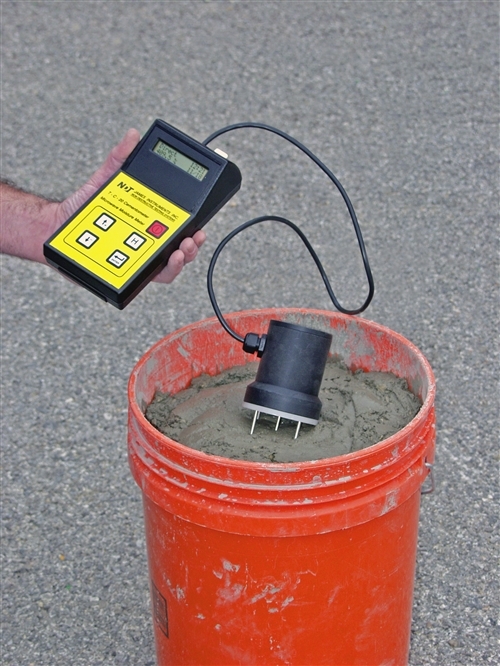Moisture Meter Acquiring Overview: What to Seek in High-Quality Instruments
Moisture Meter Acquiring Overview: What to Seek in High-Quality Instruments
Blog Article
Explore the World of Moisture Meters: Everything You Need to Know
In the world of moisture meters exists a world of accuracy and functionality that typically goes unnoticed. These tools, while relatively simple, hold a wealth of details that can substantially impact numerous markets and applications. Understanding just how moisture meters operate, the various kinds offered, and their diverse usages can drop light on their importance in making certain high quality and efficiency. By checking out the intricacies of dampness meters, one can discover a useful device that goes beyond mere measurement, supplying insights that can make a significant distinction in various areas.
Just How Moisture Meters Work
Moisture meters operate by determining the electric conductivity or capacitance of products to determine the wetness material existing. These meters are invaluable tools throughout numerous industries, including agriculture, construction, and woodworking. By making use of different methods such as pin-type or pinless modern technology, wetness meters supply exact analyses that aid specialists make educated choices.
Pin-type dampness meters function by placing the sharp pins into the product being examined. On the various other hand, pinless wetness meters use electro-magnetic signals to check a larger area without creating any type of damage to the material's surface area.
No matter the approach used, moisture meters play an important role in avoiding concerns such as mold and mildew growth, architectural damages, or product issues triggered by excess moisture. Recognizing exactly how these meters work is crucial for making certain the high quality and integrity of products in various applications.
Sorts Of Moisture Meters
Given the essential function moisture meters play in different industries, it is vital to comprehend the various types available to professionals for properly examining wetness degrees - Moisture Meter. There are primarily 2 primary types of wetness meters: pinless and pin-type dampness meters

On the other hand, pinless wetness meters use electromagnetic sensing unit plates to check a bigger area of the product without causing any type of damage. This kind is suitable for promptly scanning large locations and is commonly utilized for floor covering, wall surfaces, and ceilings. Pinless meters are convenient for taking analyses on completed surfaces without leaving any visible marks.
Both sorts of moisture meters have their advantages and are picked based on the details needs of the task handy. Understanding the distinctions in between these types is vital for professionals to make precise dampness assessments.
Applications Across Industries
Building professionals count on moisture meters to analyze the wetness degrees in building products like wood, drywall, and concrete, which is crucial for keeping structural stability and preventing problems like rot or mold and mildew. The flooring market utilizes wetness meters to gauge the moisture content in subfloors before mounting various floor treatments, preventing expensive problems due to excess dampness. In the food industry, wetness meters are made use of to check and control moisture levels in items such as grains, nuts, and dried out fruits to keep freshness and high quality.
Tips for Making Use Of Dampness Meters
Use the dampness meter's calibration setups to make sure accurate analyses when gauging the moisture web content in various products. Additionally, make sure the meter is established to the correct dampness variety for the material you are measuring to get the most specific outcomes.
When utilizing a pin-type wetness meter, insert the pins to the appropriate deepness suggested for the material being tested. This ensures that the dampness analyses are drawn from the appropriate deepness within the product, offering a more exact depiction of its moisture web content. For pinless wetness meters, remember to keep appropriate contact with the product's surface to get reliable analyses.
Routinely check and change the batteries in your moisture meter to avoid incorrect analyses due to reduced power. When not in usage to lengthen its lifespan and preserve its precision, Store the meter in a dry and risk-free area. By following these ideas, you can make best use of the performance of your dampness meter and acquire precise moisture content measurements across various products.
Maintenance and Calibration
To make sure the precision of dampness content measurements, routine upkeep and calibration of the dampness meter are vital action in its correct performance. Upkeep involves keeping the wetness meter tidy and cost-free from debris that could impact its readings. It is crucial to follow the maker's standards for cleansing to stop damage to the device. Additionally, regular calibration is required to confirm the accuracy of the readings. Calibration adjusts the moisture meter to guarantee that it supplies constant and trustworthy outcomes.
Calibration ought to Our site be executed regularly, especially if the dampness meter is used regularly or in vital applications where precise dimensions are needed. By keeping and calibrating the dampness meter regularly, users can trust the anchor precision of the moisture material dimensions obtained.
Verdict

In conclusion, wetness meters play a critical role in different markets by properly measuring the moisture material of products. Recognizing how these gadgets work, the various kinds readily available, and proper maintenance and calibration are important for acquiring trusted results. Whether in production, building, or farming, making use of wetness meters assists guarantee high quality control and effectiveness in processes.

In have a peek at this site conclusion, wetness meters play a critical role in various sectors by properly measuring the dampness web content of materials.
Report this page